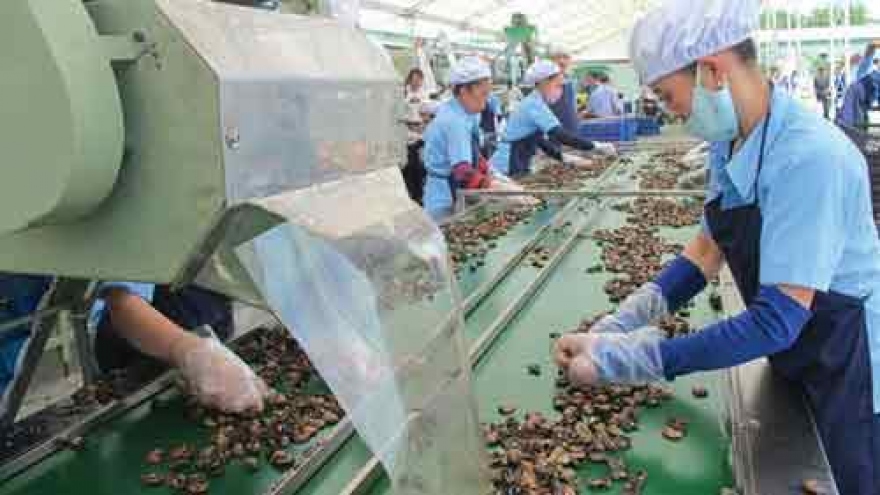Raw material shortage, low prices stifle cashew industry
Industry insiders say unhealthy competition has led to low prices and higher consumption, resulting in a shortage of raw cashews to process.
 |
|
Input shortage and unhealthy competition cause many cashew factories to suspend operation.
|
Industry insiders attribute the crisis to low prices and a shortage of raw material to process.
A recent Vietnam News Agency report said just 12 of 33 cashew factories were still operating in the Mekong Delta’s Long An Province.
The situation was even worse in the southeastern province of Binh Phuoc, where up to 80% of small to medium enterprises have halted production.
Nguyen Duy Tan, CEO of a cashew exporter in Long An Province, told the Thanh Nien newspaper that cashew businesses have been performing poorly since October 2017.
Unhealthy competition among local firms was part of the problem, said Nguyen Duc Thanh, chairman of the Vietnam Cashew Association (Vinacas).
He said small to mid-size firms were disrupting the market by selling cashew for US$9.16-US$9.27 per kilo to traders against the market price of US$9.49 per kilo.
Over the last two years, an increasing number of households have joined the cashew industry, attracted by the high profits it was yielding.
However, with low entry barriers, the number of small and micro enterprises overcrowded the local market, and caused prices to plummet. Many companies could barely manage to break even and others suffered losses.
This also meant that Vietnamese cashew’s export prices dropped to its lowest mark in recent years.
This has had impacts beyond Vietnam.
India, the world’s second largest cashew exporter, sought government intervention when it was not able to compete with Vietnam's current cashew prices. Importers in the US and EU have also suffered, having to lower the prices of their inventory to match the new market price, the Thanh Nien report said.
Vinacas also pointed out that raw material shortage was another reason many firms have suspended their operations. Lower prices were also a factor in this situation. Cashew global consumption rose by 3.5%-5% because of lower prices, which created in turn a shortage of raw material for the local processing industry.
Vinacas vice chairman Ta Quang Huyen said that Vietnam imported 283,000 tons of raw cashew in the first five months of the year. This was on top of 370,000 tons from domestic supply and purchases from Cambodia via border trade.
It takes 4.3 kilos of raw cashew to produce one kilo of cashew kernel, and the industry had already exported 141,000 tons of cashew kernels in the first five months of 2018, meaning that the entire supply of 653,000 tons had been used up.
In this context, some enterprise leaders have expressed concern about the industry’s aim to increase the value of cashew export to over US$3.7 billion this year
Since local cashew producers have little or no inventory, they have to wait for raw material supply to resume before they can reopen their factories, Huyen said.
Global cashew output is expected to increase 4% in 2018, and demand for cashew products is estimated to increase 5%, he added.
Tran Van Hiep, head of the trade promotion board at Vinacas, struck an optimistic note, saying cashew prices are expected to recover soon.
Vietnam still remains the world leading cashew provider, the 13th consecutive year that it has retained this position.
The VNA report said that Vietnam aims to account for 65% of global cashew supply, valued at US$5.7 billion this year.
According to the Ministry of Agriculture & Rural Development, Vietnam exported US$3.52 billion worth of cashew in 2017. Its top three importers are the US (29%); the Netherlands (17%); and China (15%).


